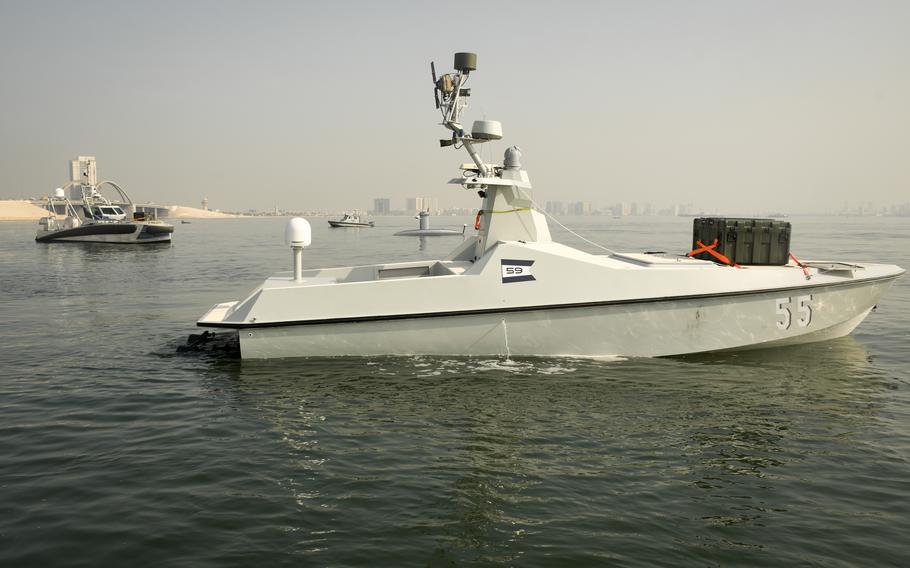
Unmanned ships with green boxes containing aerial drones prowled the waters near Naval Support Activity Bahrain, Dec. 1, 2022, as part of an exercise that was the first test for 10 systems by the U.S. 5th Fleet. (J.P. Lawrence/Stars and Stripes)
MANAMA, Bahrain — Unmanned boats with onboard aerial drones ready to launch sailed through the waters off Bahrain on Thursday, carrying with them the Navy’s vision of a 100-vessel unmanned surface fleet in the Middle East by the end of next summer.
A three-week training event dubbed Digital Horizon, which started last week, features 15 types of unmanned systems, 10 of which are new to the Navy in the region, service officials said.
“This is a notable influx of new systems that 5th Fleet hasn’t worked with before, especially at one time,” Cmdr. Timothy Hawkins, Naval Forces Central Command and 5th Fleet spokesman, said Thursday. “This event, we haven’t done something like this yet, but we’ve been building up to it.”
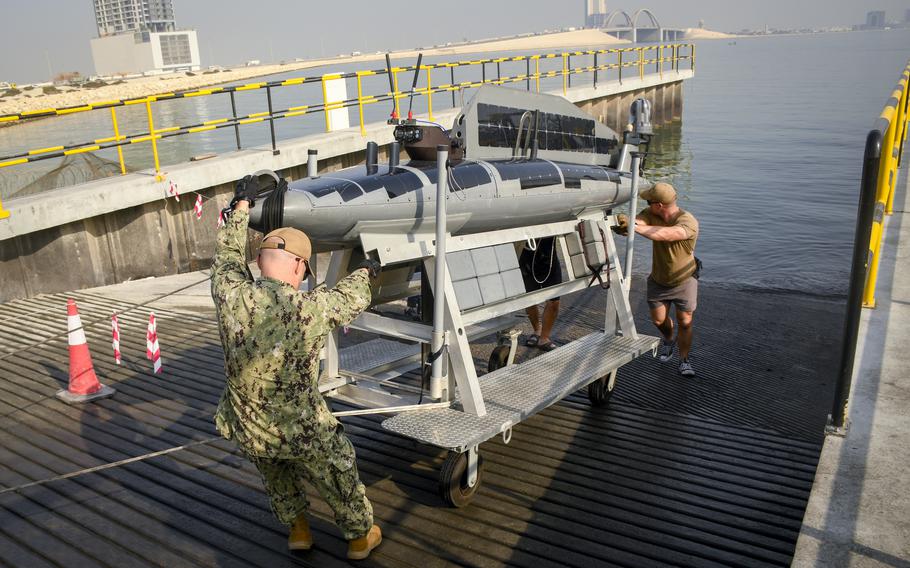
Sailors with the Navy’s Task Force 59 launch a drone boat from a pier at Naval Support Activity Bahrain, Dec. 1, 2022, as part of the Digital Horizon exercise. The unmanned vessel, the Ocean Aero triton, carries sensors that can conduct surveillance. It also can transform between surface and submarine modes. (J.P. Lawrence/Stars and Stripes)
The Navy aims to rely more on unmanned vessels aided by artificial intelligence to help patrol Middle East waterways, through which much of the world’s trade transits.
A naval unit known as Task Force 59 was created last year to focus on integrating drones and AI into 5th Fleet operations. Unmanned systems can operate for long stretches on their own as they gather information.
As boats with observers approached the drones out at sea Wednesday, the vessels’ artificial intelligence alerted contractors and sailors at Task Force 59’s robotics operations center at NSA Bahrain.
Some of the drone boats can identify objects in the water and spot suspicious behavior. This capability allows humans to focus on priority threats, Navy Capt. Michael Brasseur, commodore of Task Force 59, said Thursday.
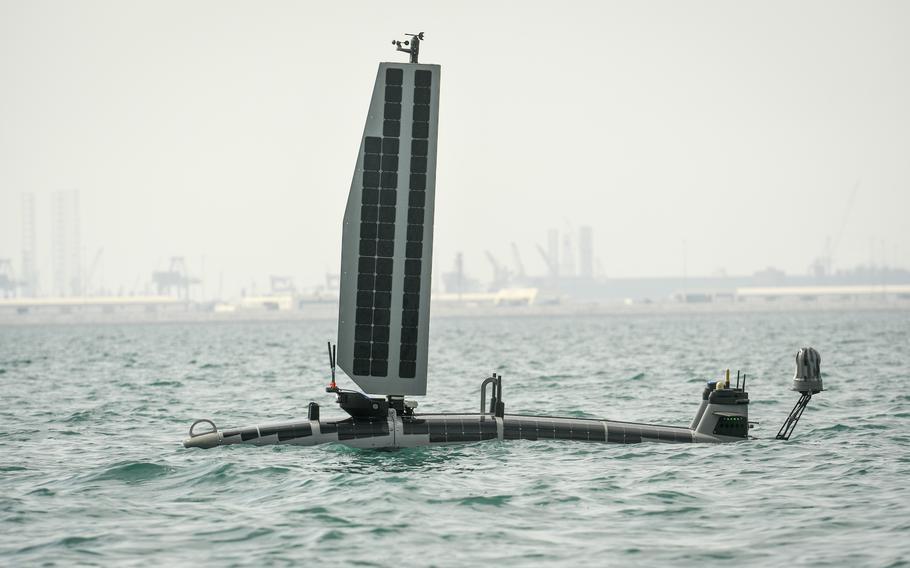
The unmanned vessel Ocean AeroTriton cruises through international waters between Naval Support Activity Bahrain and Iran, Nov. 30, 2022, as part of a naval exercise. The solar-powered drone can spend three months at sea on the surface, or eight days submerged. (J.P. Lawrence/Stars and Stripes)
“What we want to do ultimately is expand further how far we can see,” Brasseur said. “And we want to leverage machine learning and AI to reduce the cognitive load on the watch-standers.”
Over the past year, Task Force 59 operated unmanned surface ships in the Middle East for more than 25,000 hours, a Naval Forces Central Command statement last week said.
Some of the vessels known as Saildrone Explorers have operated at sea for as long as 220 consecutive days, the NAVCENT statement said.
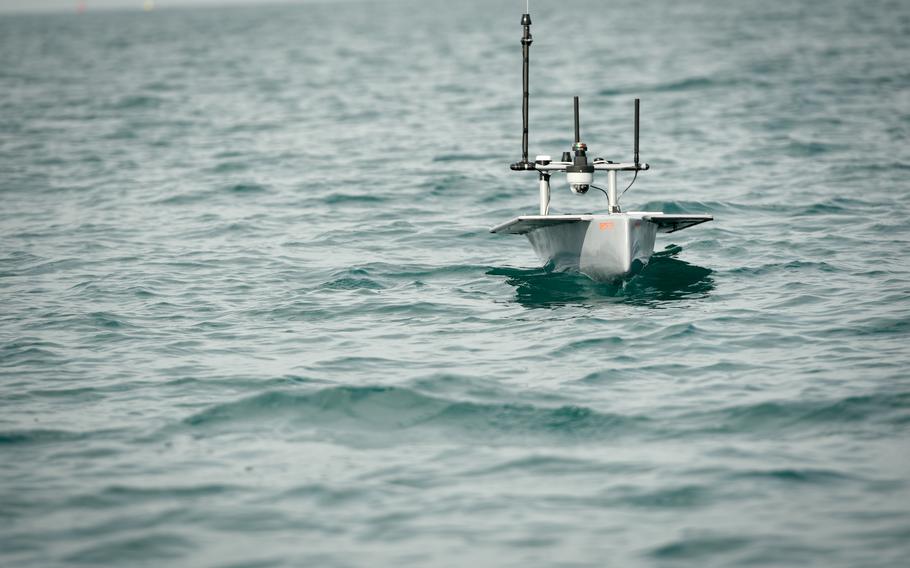
The Seasats X3, an unmanned surveillance craft, skims the waters of the Persian Gulf, Nov. 30, 2022 as part of a 5th Fleet exercise. The small ship can carry payloads for reconnaissance, electronic warfare and ocean mapping. (J.P. Lawrence/Stars and Stripes)
Iran seized those drones on separate occasions in August and September. In both instances, Iranian sailors released them as U.S. warships neared, the Navy said.
Iran has gained prominence for its own unmanned technology, specifically the aerial drones it is supplying to Russia for use in the war in Ukraine.
The Digital Horizon exercise includes three aerial drones that will be tested in the Middle East for the first time.
Aerovel’s Flexrotor and Shield AI’s V-BAT each have vertical takeoff and landing systems. The other is tethered on a cable and can operate in harsh environments, a Navy statement said.
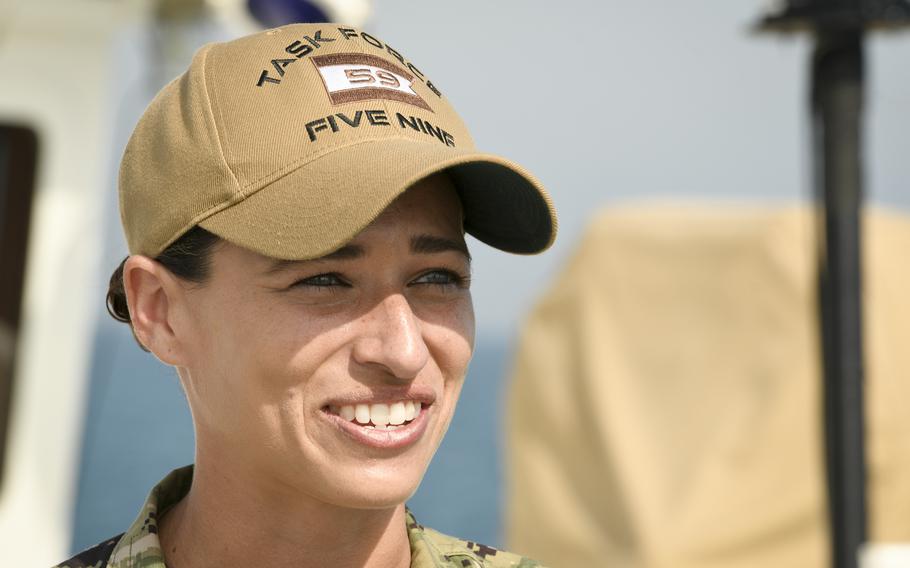
Lt. j.g. Sofia Gross, chief strategy officer of Task Force 59, explains how the organization uses aquatic and aerial drones on Nov. 30, 2022, while aboard the USCGC Emlen Tunnell, a Coast Guard cutter deployed to the Persian Gulf. The Navy created Task Force 59 in 2021 to integrate unmanned systems on the surface, underwater and in the air. (J.P. Lawrence/Stars and Stripes)
One aquatic drone being tested, the Ocean Aero Triton, can operate for eight days at a time as a submarine and three months as a surface vessel.
The Triton’s sail rotated up and down Thursday as the company representative demonstrated how the drone can go underwater within minutes if it detects a threat.
The 10 new drone systems in the exercise were selected from 100 companies that applied, Navy officials said.
Of the 100 unmanned surface vessels the task force wants sailing around the Middle East by next summer, the U.S. will contribute 20, while regional allies will contribute the rest, Navy officials said.